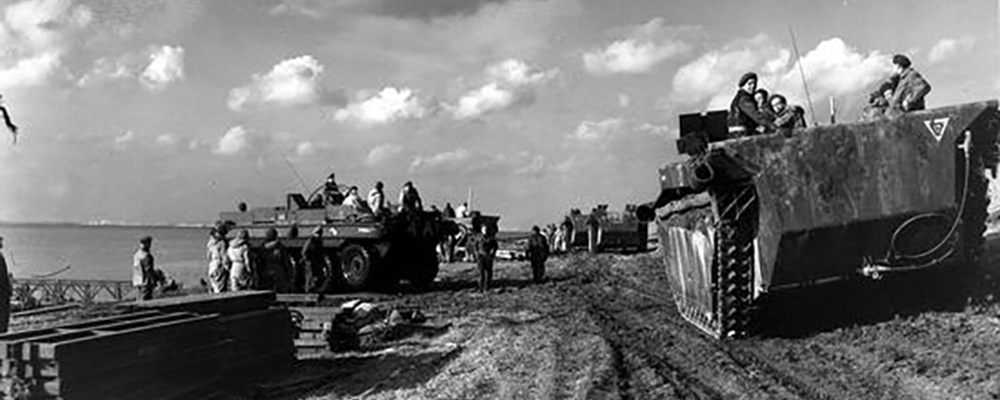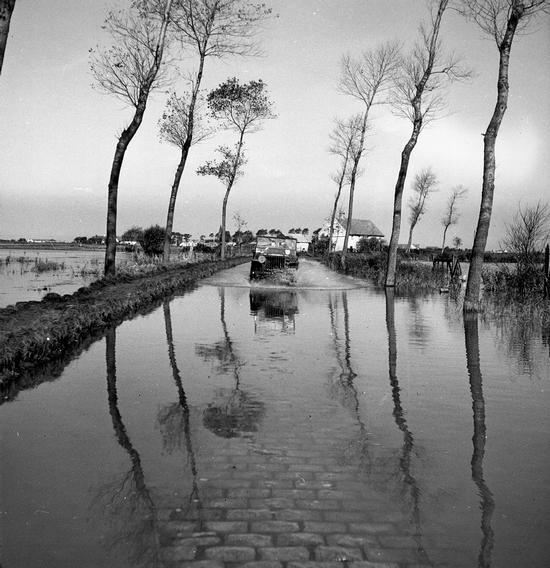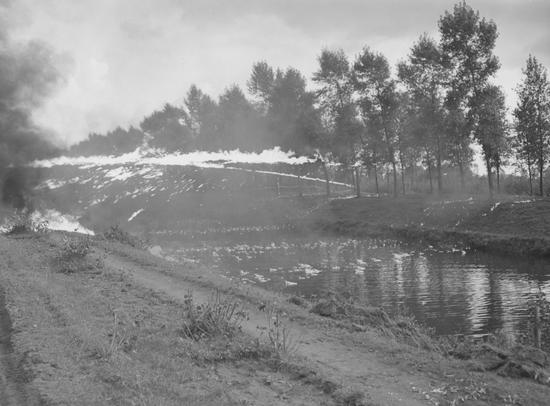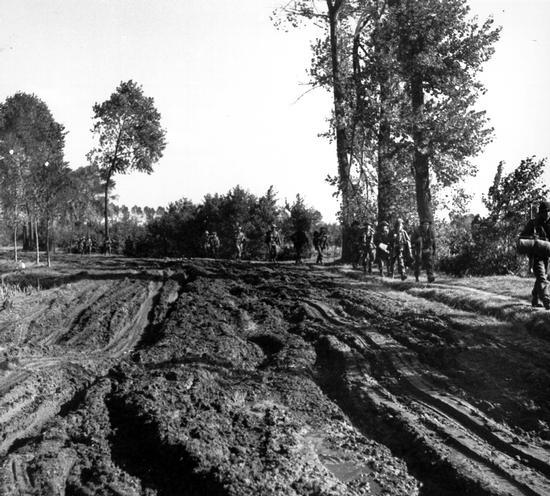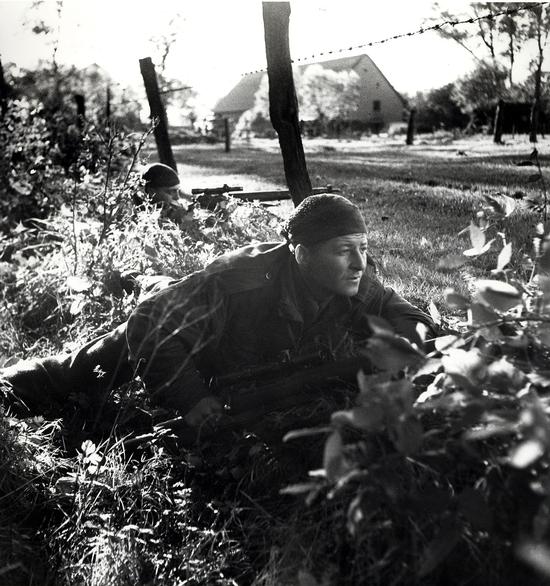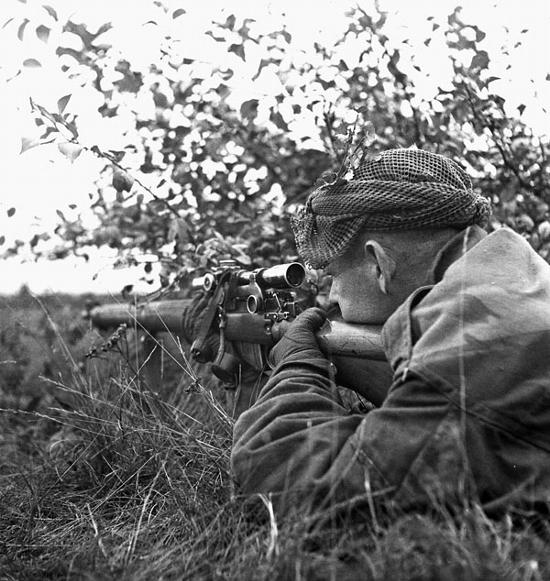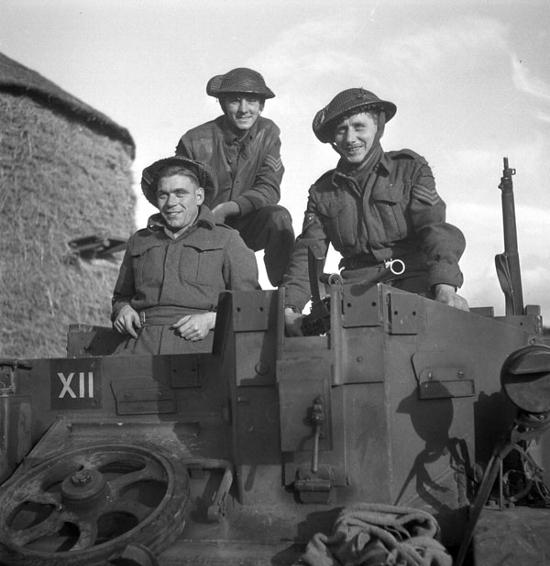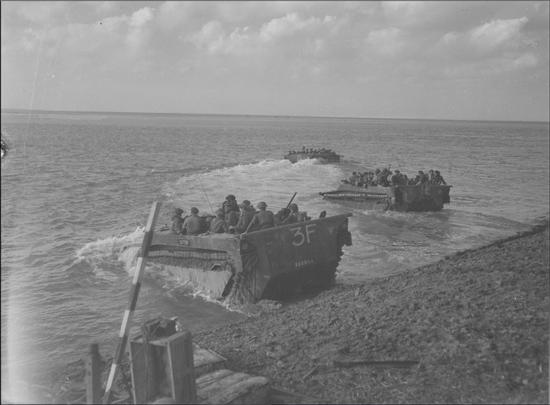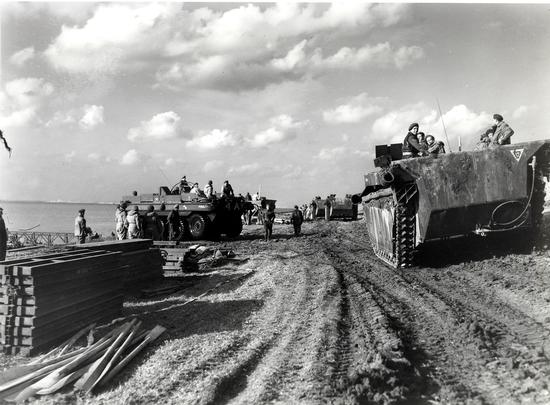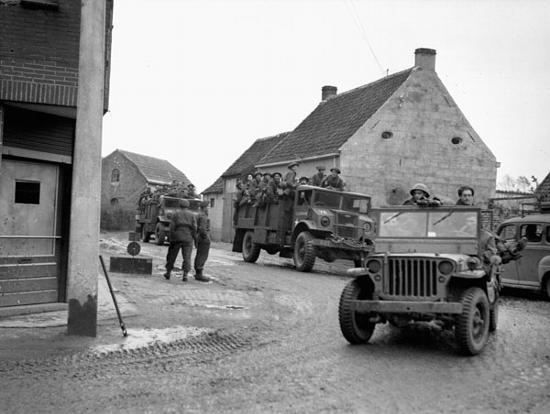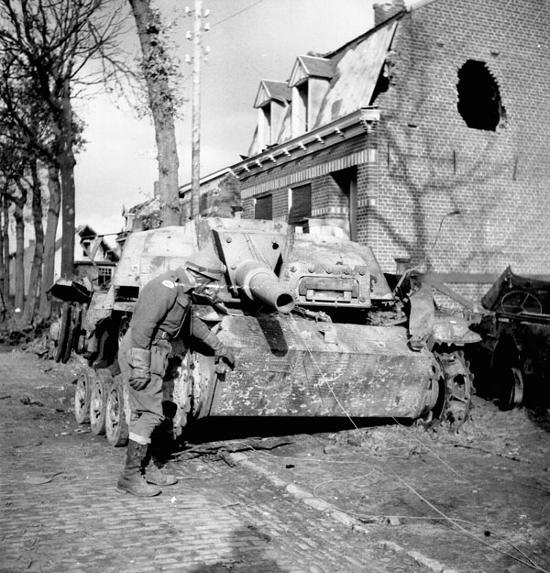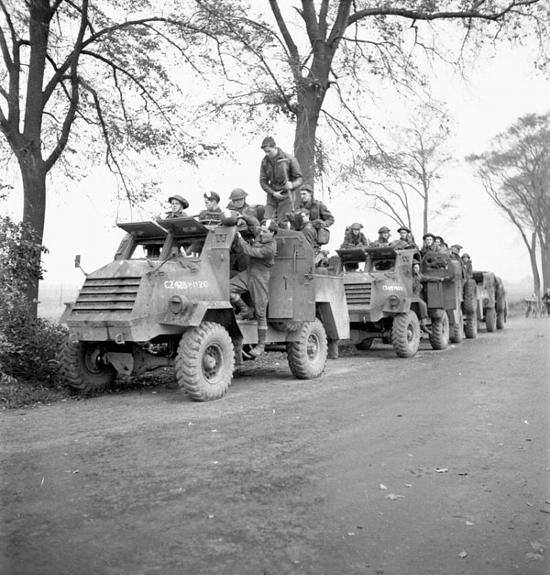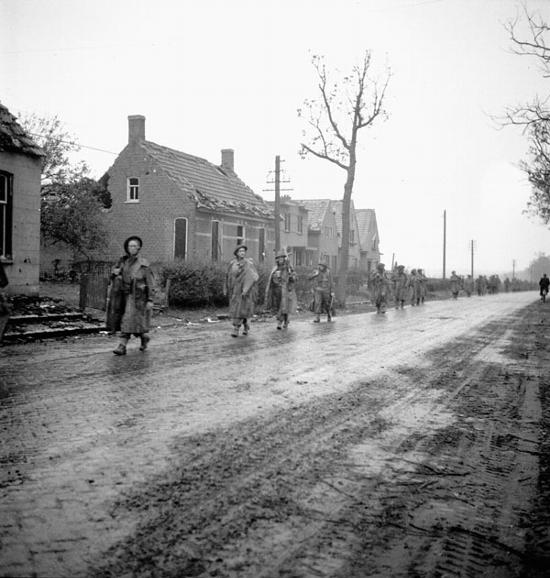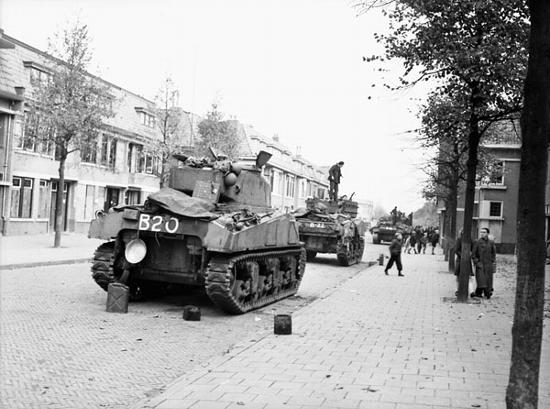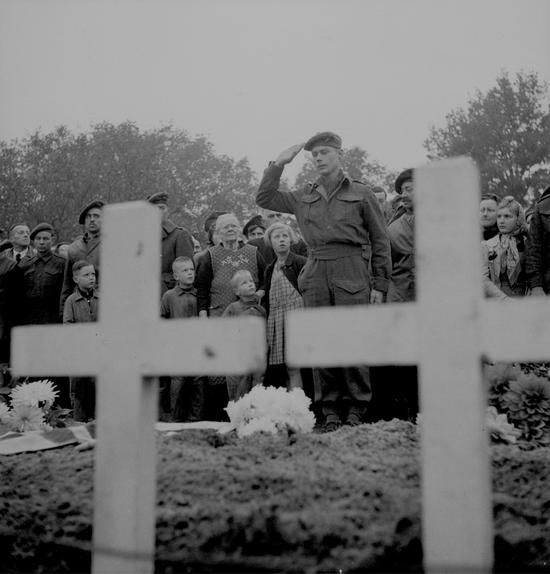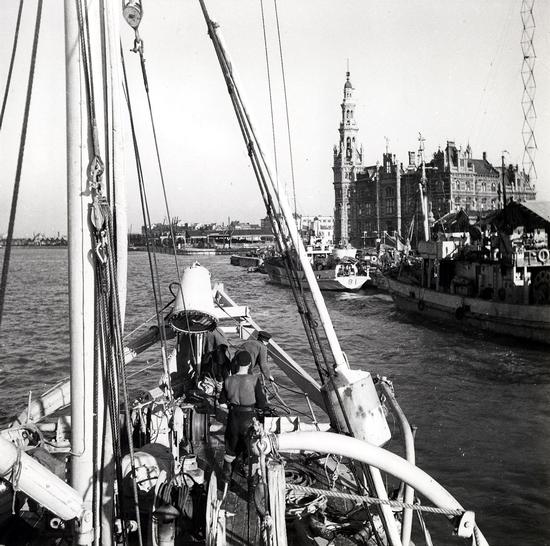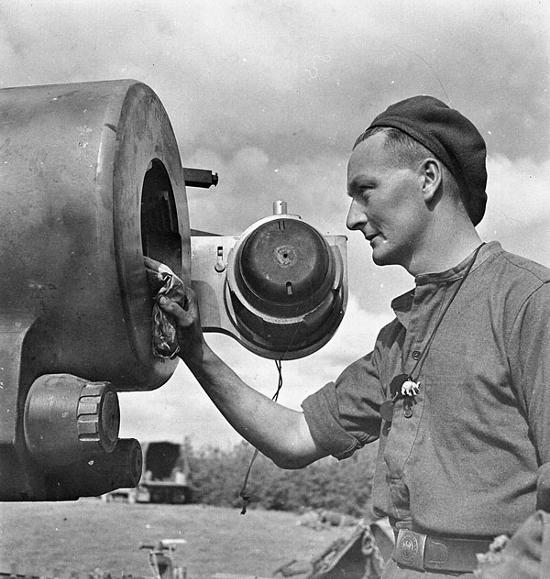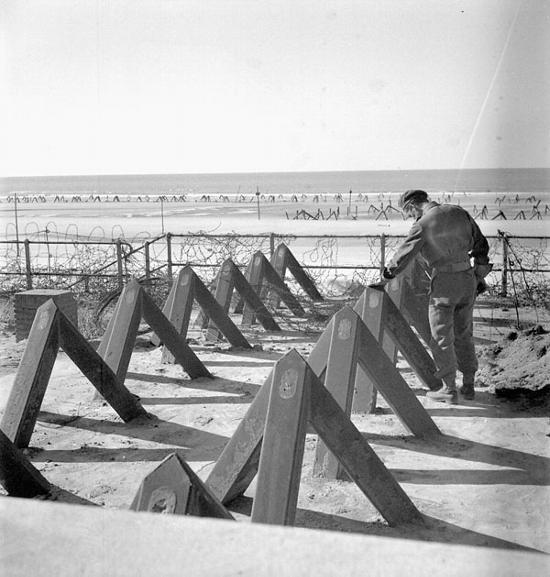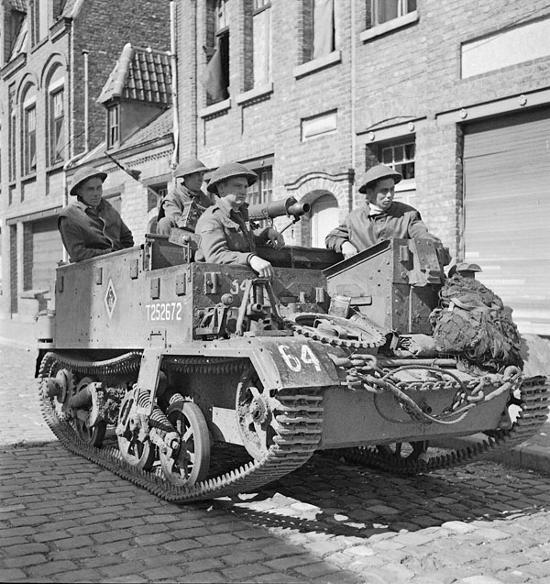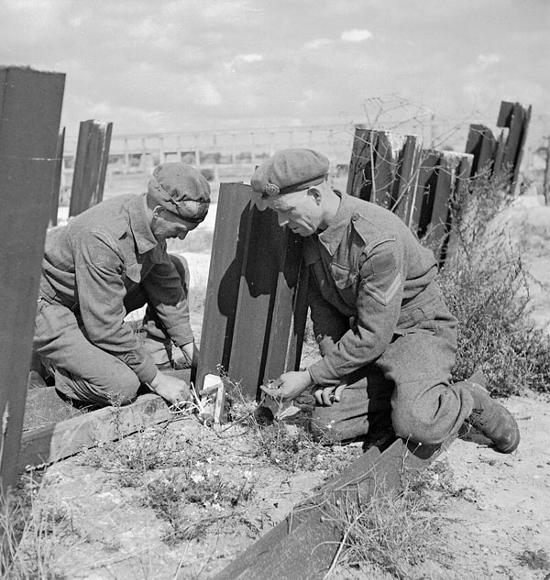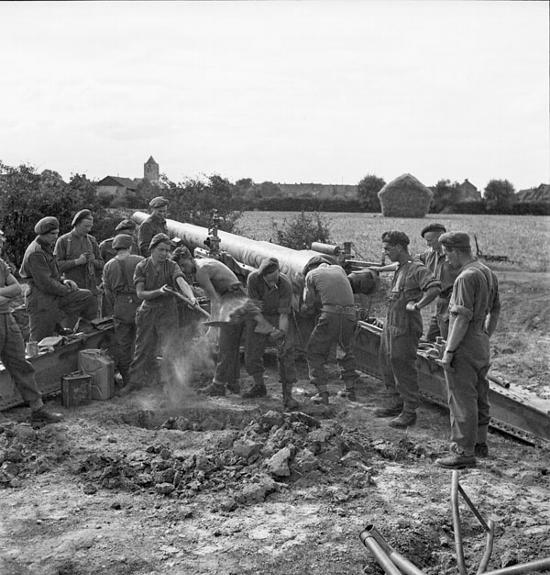Introduction
During the Second World War, Belgium was the scene of major fighting by the First Canadian Army from September to November 1944. The Canadians were given the important tasks of clearing coastal areas in the north of France and capturing the launching sites of German rockets to put an end to their attacks on southern England. The First Canadian Army also played a leading role in opening the Scheldt estuary (tidal river), gateway to the Belgian port of Antwerp. Access to this port was essential to maintain supply lines to the Allied armies as they continued their push toward Germany to defeat Adolf Hitler's forces and free Western Europe from four years of Nazi occupation which had begun in April 1940.

Vehicles of the 3rd Canadian Infantry Division moving through Bockhoute, Belgium. October 18, 1944 / Bockhoute, Belgium. Photo: Lieut. Donald I. Grant / Canada. Dept. of National Defence / Library and Archives Canada / PA-137188
